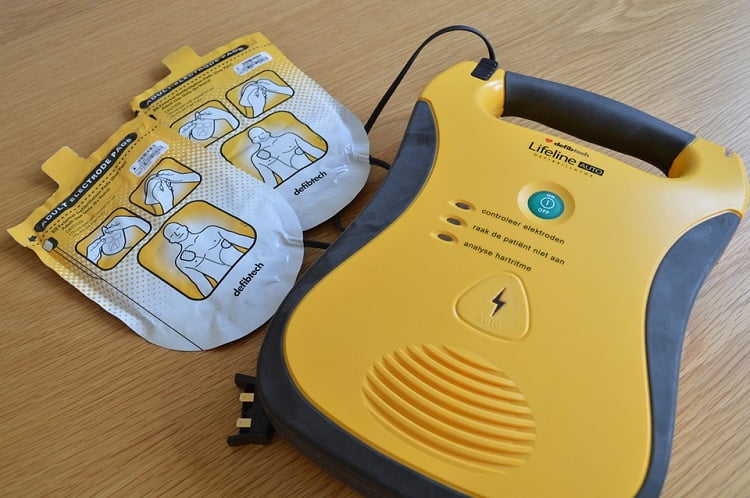Over 350,000 people in the United States experience sudden cardiac arrest. Most people – about 90 percent – who have this type of heart event will die from it. In many cases, they perish within minutes. Immediate treatment with a defibrillator can save their lives, even if that treatment comes from a bystander who has no medical training.
Bystanders can use automated external defibrillators (AEDs) to save the lives of people having a sudden cardiac arrest. A growing number of public places, such as shopping malls, airports and airplanes, golf courses, businesses, hotels, schools, and sports venues, store AEDs in case of emergency.
While they are seemingly everywhere now, just having an AED on location is not enough – the life-saving devices must be stored and used properly to give the person having a sudden cardiac arrest the best possible chances of survival.

How to Use an AED
Get ready to use the AED
Ensure that the person needs help (someone who has had a sudden cardiac arrest will not have a pulse). Then, ask a bystander to call 911 for help; the 911 operator may ask the bystander to remain on the phone.
Turn on the AED
Follow any visual or audio prompts.
Open the person’s shirt
Wipe the person’s bare chest dry. If they are wearing any medication patches, remove the patches before wiping their chest; use a gloved hand to remove patches, if present.
Place the AED pads
Place one pad on the right side of the person’s chest, just below their collarbone. Put the other pad on the lower left side of their chest. Many AEDs come with the pads already connected to the device; connect the pads to the AED if they are not already connected.
Stand clear
Make sure that nobody, including yourself, is touching the person. Tell everyone to “Stand Clear.” Be sure to speak loudly and clearly, particularly if the scene is noisy or chaotic.
Analyze the patient’s heart rhythm
Some AEDs automatically begin analyzing the patient’s heart rhythm, while other models require the user to push the “Analyze” button.
Deliver a shock
If instructed to do so by the AED, and after making sure that everyone, including yourself, is clear, deliver a shock by pressing the “Shock” button.
Begin CPR
After delivering the shock, or if the AED does not advise a shock, begin cardiopulmonary resuscitation (CPR). Medical professionals can perform about 30 chest compressions at a rate of about 100 minutes, followed by two rescue breaths; members of the public can perform “hands-only” CPR, which involves chest compressions without the rescue breaths.
Perform two minutes of CPR, which is about five cycles, while continuing to follow any instructions given by the AED. Discontinue CPR if you notice obvious signs of life, such as breathing or movement. Monitor the patient’s breathing to assess any changes in their condition.
Proper Storage of an AED
AEDs can save lives, but only if they are in working order and people know where to find them. All staff and employees of an organization should know where the AED is and undergo training for its use.
The AED should be in an easily accessible location, where staff members and visitors can gain immediate access to them without having to locate someone else. While the cost of an AED makes it tempting to lock up the lifesaving device, trying to find the key can waste valuable seconds.
Never block or obstruct access to the AED. It is particularly important to keep your AED in an unobstructed area during special events, construction, or other occurrences that causes you to rearrange the space near the AED – as these are the occasions when unexpected events like sudden cardiac arrest seem to happen.
Make sure to inspect the AED once every three months, and check the body of the AED for cracks, wear, and other signs of damage. Power up the device to ensure it turns on without a problem, and check the status indicator light after shutting off the AED to ensure it is ready for use. Return the AED to the manufacturer if it does not power on or if the indicator light shows an error.
Verify that the AED kit contains gloves, a razor and scissors for shaving chest hair and cutting clothing, and a breathing mask. Lastly, check the expiration date on the pads; order more pads before you need them, and make sure the batteries are not expired.
With any luck, you will never have to use your AED. If you do, though, proper storage and use of your AED can help you save a life.